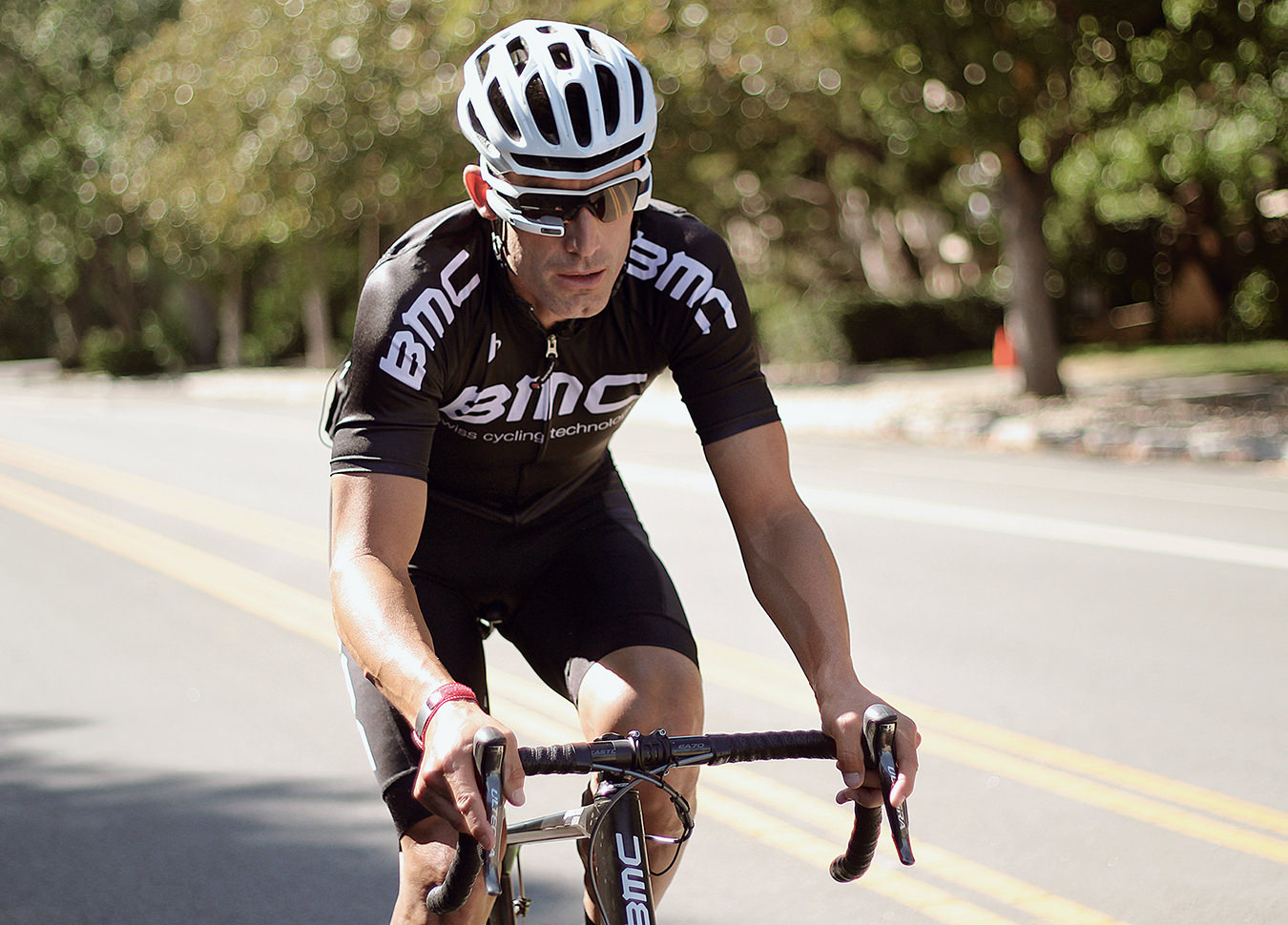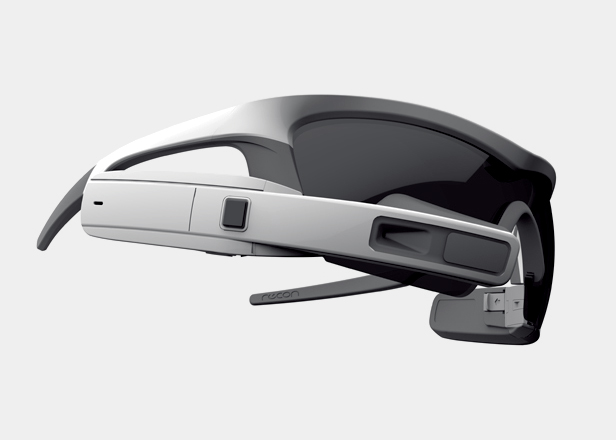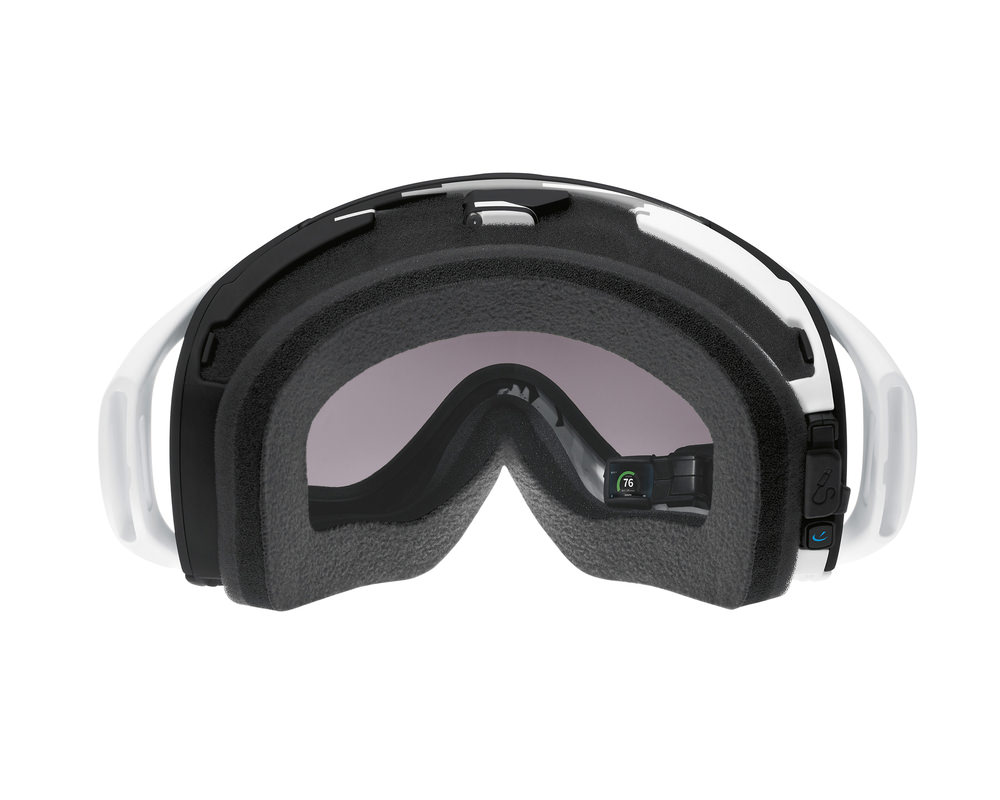“And in her ears the little Seashells, the thimble radios tamped tight, and an electronic ocean of sound, of music and talk and music and talk coming in.”—Ray Bradbury, Fahrenheit 451
Not so long ago, those tiny, in-ear radios from the dystopian world Ray Bradbury created in Fahrenheit 451 seemed surreal; in the 1950s, ear buds, voice calls, and touch screen tablets were simply the product of wild imaginations. Now, these once fictitious technologies are so deeply embedded into daily life that it’s easy to forget the feeling of a folding map or an address book.
Fans of science fiction could likely recall several examples of high-tech helmets and lenses that analyze the environments and vitals of the characters that use them and feed this data directly to the eye. This is precisely the vision that CEO Dan Eisenhardt and CTO Hamid Abdollahi had in mind when they met in 2006. Though the initial concept began with a high-tech swimming goggle that provided real-time data feedback while underwater, the first generation of Recon’s Heads-up Display (HUD) stepped on terra firma in 2010 with the launch of Transcend, the first consumer-oriented HUD. Transcend took advantage of the ample space innate to snow goggle design. Since then, Recon’s HUD technology has evolved from snow applications to a broader context in the world of sport that includes cycling, running, and golf.
It didn’t take long for extreme sports professionals from BASE jumpers to downhill skateboarders to adopt Recon’s HUD technology. In 2012, Mischo Erban, a Canadian downhill skateboarder, hurtled down a hill at 129.94 km/h with the help of a Recon Instruments HUD installed in his helmet, earning himself a new Guinness World Record. Real-time data delivered directly to his eye allowed him to see his speed and make minor physical adjustments in order to squeeze out every morsel of velocity. “Without that Recon display, he wouldn’t know if he was going 125km/h or 130km/h,” says Abdollahi. This is the very core of what Recon does: illuminating the value of instant feedback.
So what does a sports-oriented HUD look like? In uncharted spaces of product innovation, there’s rarely a solid archetype. “It took roughly 10 years of trial and error for the pioneers of the digital age to determine that a cellphone has a touch screen,” says Afshin Mehin, an industrial design consultant, whom Recon has integrated into their team. Mehin has contributed to the overall hardware and mechanical design of Recon’s newest product, the Recon Jet. The Jet packs an impressive number of analytical and interactive components into a pair of badass sunglasses. It weighs a measly 60 grams and features an arsenal of sensors that include an accelerometer, gyrometer, magnetometer, pressure sensor, an infrared sensor for gaze detection, and an optical touch sensor. Where’s the camera you ask? It’s hidden in there too. If that weren’t enough, the Jet integrates seamlessly with Recon’s Engage platform, which supercharges the Jet by connecting to your iOS or Android device for the full experience.
Packing all these features into a slim package wasn’t easy. “It was months of basically chiselling away, making certain that every single dimension was dialled,” says Abdollahi. The idea was to create a glanceable product; one that is not intrusive visually, physically, or with distracting information. The digital display’s position in the lower right hand corner of the unit has been carefully considered to be in peripheral view when you’re not looking at it. And at half an ounce each the battery and module balance the Jet perfectly on your face.
Recon develops with the next generation in mind. The initial 2006 vision of a HUD for competitive swimmers could become reality in the near future. The team has taken the scenic route, beginning with the bulkier snow goggle typology and selecting those key traits to develop a smaller, quicker, and more aggressive animal. “That’s the path of evolution we’ve been working on since day one,” says Abdollahi. “We just had to decide where to go first,” adds Eisenhardt.











